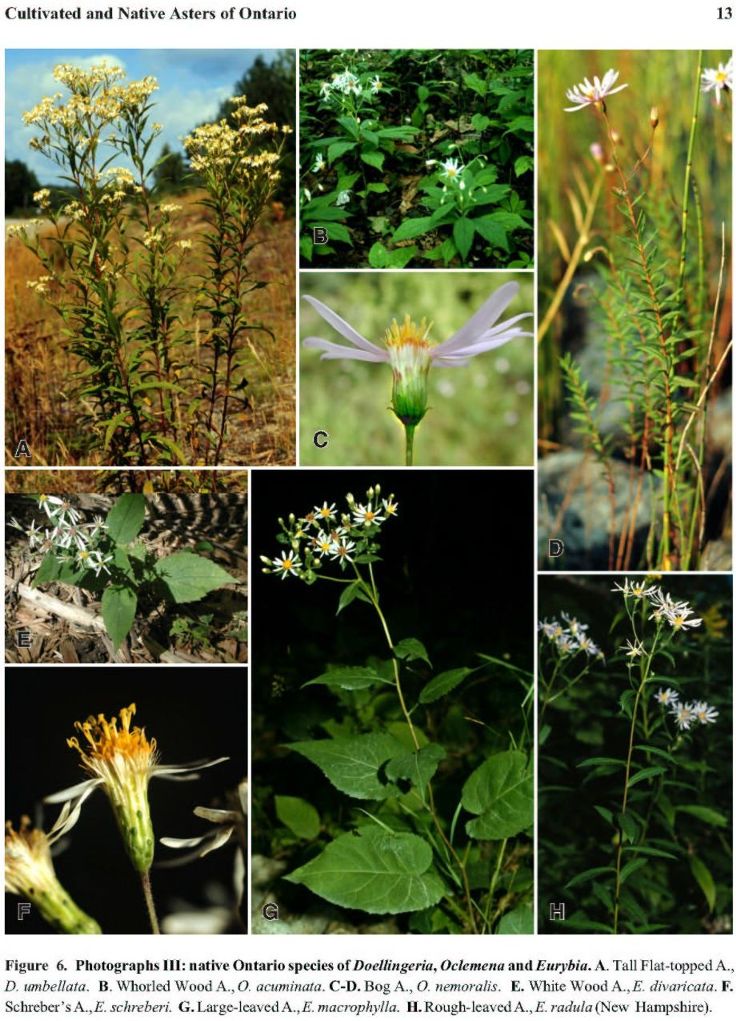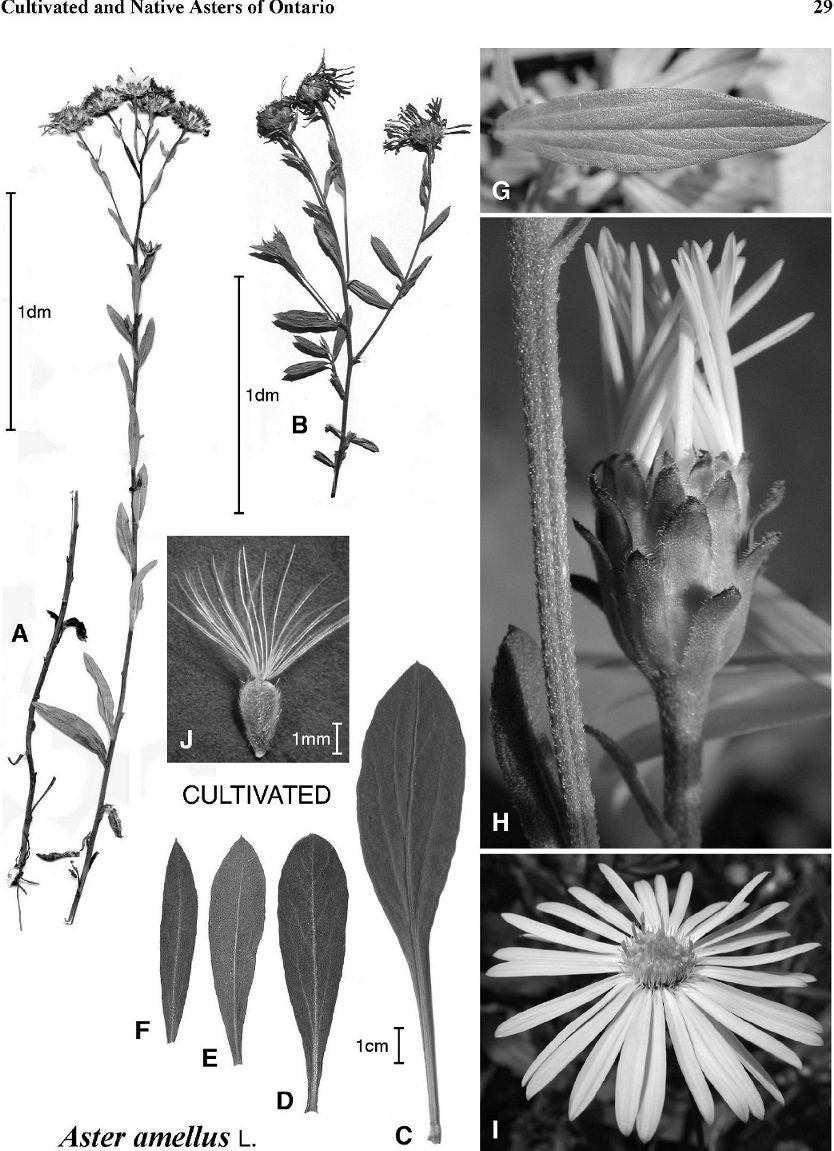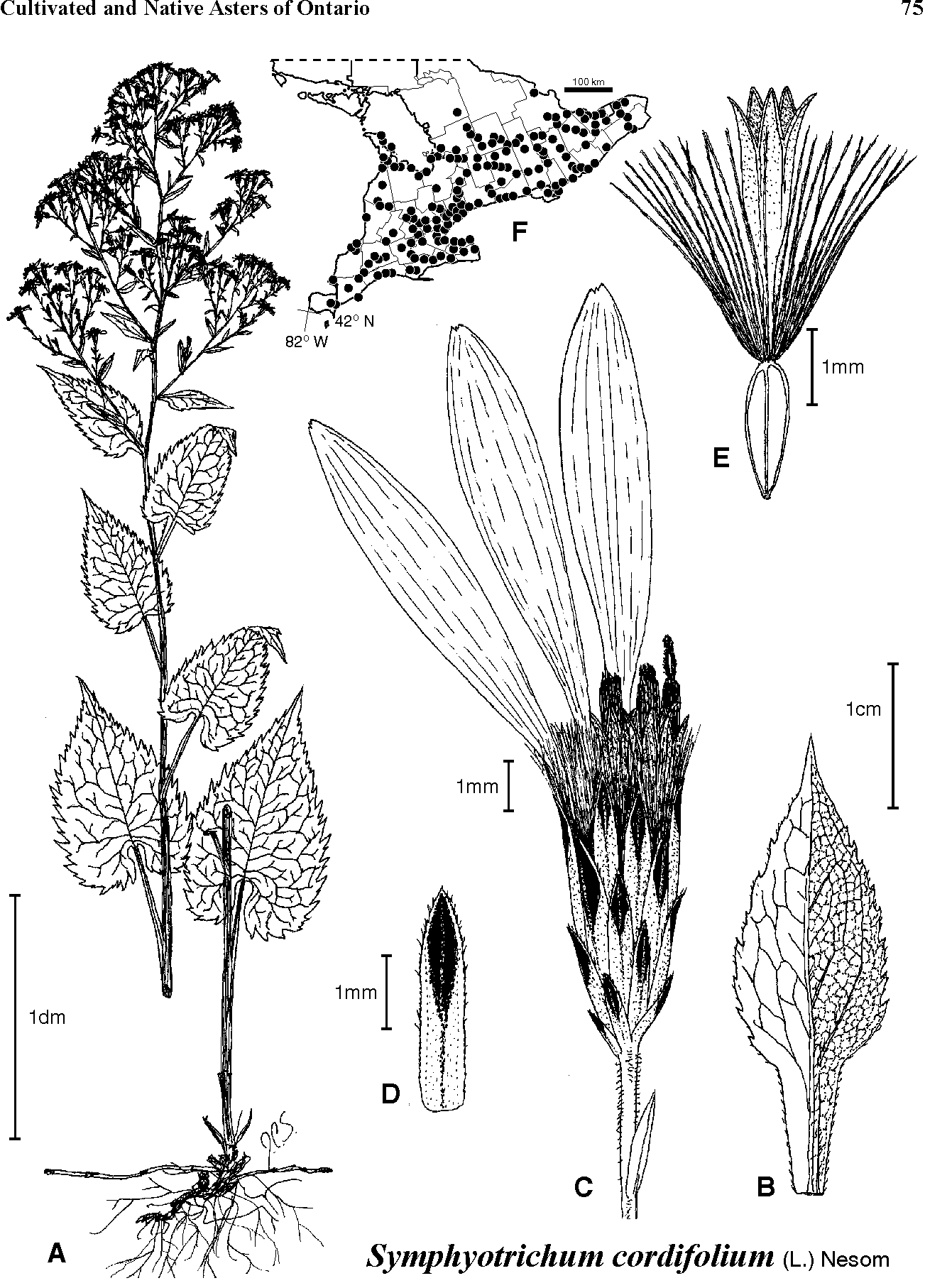Semple, J.C., S.B. Heard and L. Brouillet. 2002. Cultivated and native asters of Ontario (Compositae: Astereae): Aster L. (including Asteromoea Blume, Diplactis Raf. and Kalimeris (Cass.) Cass.), Callistephus Cass., Galatella Cass., Doellingeria Nees, Oclemena E.L. Greene, Eurybia (Cass.) S.F. Gray, Canadanthus Nesom, and Symphyotrichum Nees (including Virgulus Raf.). Univeristy of Waterloo Biology Series No. 41: 1-134.
Abstract
Six genera of asters are native in Ontario: Aster (one species), Canadanthus (one species), Doellingeria (one species), Eurybia (four species), Oclemena (two species), and Symphyotrichum (24 species, including 3 adventives). In addition, native and non-native cultivars of Eurybia (one species) and Symphyotrichum (three species) and cultivars of the Eurasian genera Aster (six species and one hybrid), Callistephus (one species) and Galatella (one species) are also available in nurseries in Ontario. The classification used in this treatment is discussed and is supported by a summary of the results of an analysis of ITS DNA sequences of more than 160 species in the Tribe Astereae including more than 80 species of asters.
In Ontario, aster species range from very common and widely distributed to very rare. Nine species of asters are rare and either threatened or vulnerable. Of these, Eurybia divaricata, Symphyotrichum praealtum, S. prenanthoides, S. sericeum and S. shortii have been the subjects of COSEWIC status reports. The current status of Symphyotrichum undulatum remains ambiguous, no recent collections having been made. One species, Symphyotrichum subulatum, appears to be naturalized in extreme southwestern Ontario and adventive in several other locations.
There are many cultivars of various species of asters available in southern Ontario nurseries. These include cultivars of Aster ageratoides (sold under the name Kalimeris incisa), A. alpinus, A. amellus, A. ×frikartii, A. mongolicus (sold under the name Asteromoea mongolica), A. tataricus, Galatella punctata, Eurybia divaricata, Symphyotrichum dumosum, S. novae-angliae, S. novi-belgii, and S. racemosum. All are sold under the genus name Aster and often with the wrong species epithet. As well, the Chinese Aster Callistephus chinensis is widely available.
A key to all native taxa, a detailed description of each species including cultivars, discussions of infraspecific taxa and cultivars, and detailed illustrations of all taxa are included. Tables summarizing classification, distributional data, frequency of ploidy levels, and cultivated asters are included. Ten pages of coloured photographs are also included.
The following new nomenclatural combinations are proposed (pp. -134): Symphyotrichum subg. Ascendentes, S. subg. Astropolium, S. subg. Chapmaniani, S. sect. Polyliguli, S. sect. Turbinelli, S. subsect. Heterophylli, S. series Concinni, S. series Cordifolii, S. series Foliacei, S. series Punicei, S. attenuatum, S. chapmanii, S. ericoides subsp. pansum, S. falcatum subsp. commutatum, S. laeve subsp. concinnum, S. nahanniense, S. plumosum, and S. texanum.
Sample Figures

Coloured Photographs - Fig. 6. Native Ontario species of Doellingeria, Oclemena and Eurybia.

Black and white Photographs - Fig. 14. Morphology of Aster amellus.

Line Drawings and Map - Fig. 37. Morphology and distribution of Symphyotrichum cordifolium in Ontario.